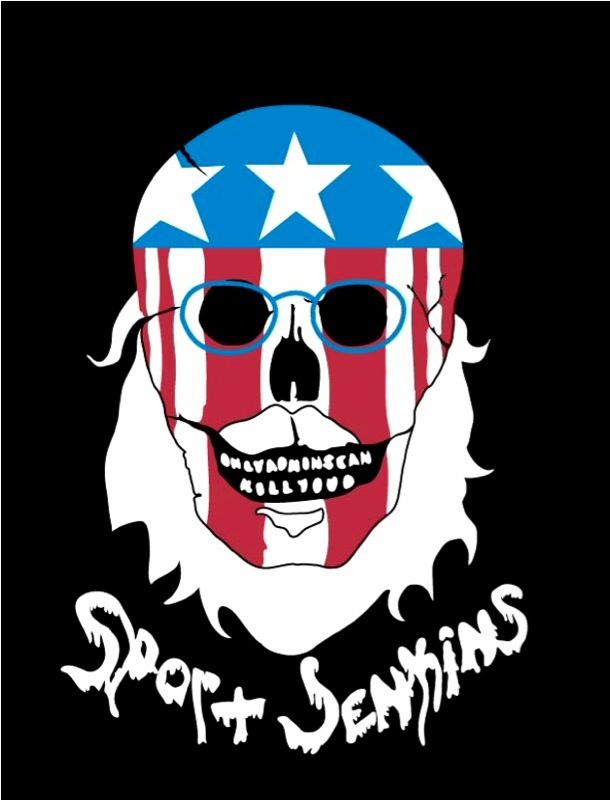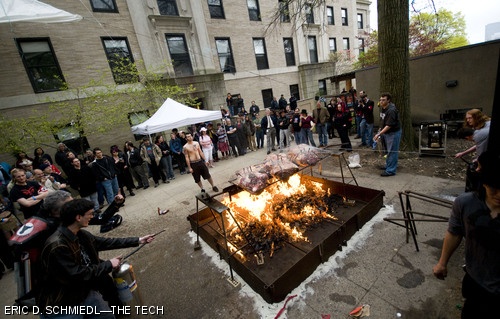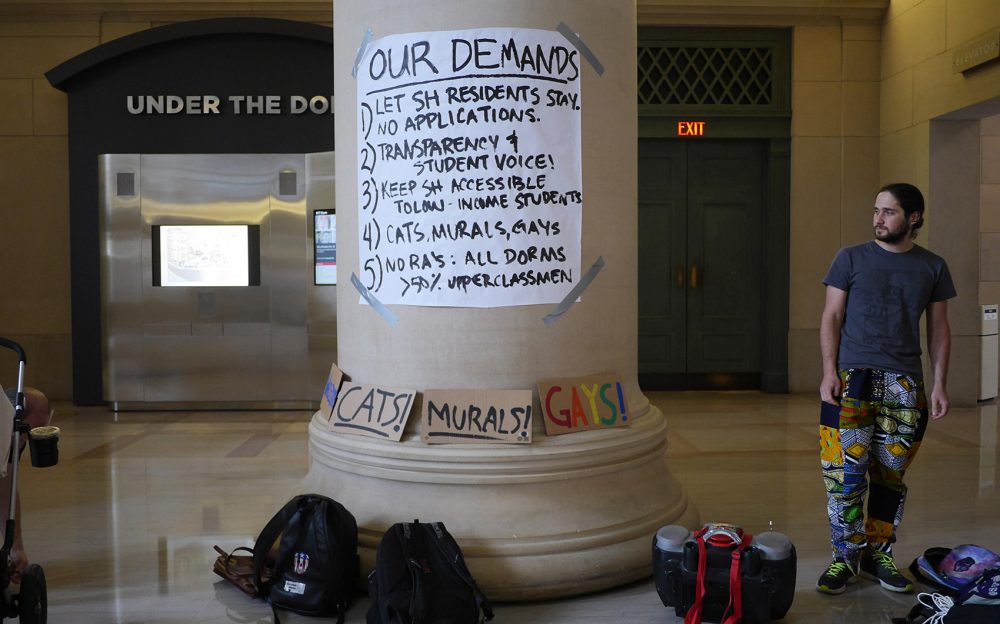La Taverne des Patriotes’: The Power of Civic Imagination and Participatory Politics—A Comparative Study of the French and U.S. Alt-Right Movements (Part One)
/Last spring, I taught a seminar focused around the Civic Imagination and Participatory Politics. We were blessed to have students in the class from many different parts of the world and thus to be able to test ideas I had developed in response to our research on young activists in the U.S. against case studies from Western Europe, Asia, Latin America, and Africa. I wanted to share one of the many great papers that came out of the class -- this one drawing parallels between alt-right practices in America and France and helping us to understand the local specificities of the movement.
‘La Taverne des Patriotes’: The Power of Civic Imagination and Participatory Politics—A Comparative Study of the French and U.S. Alt-Right Movements
By Margaux Gatty
—————
Introduction
Today, the compression of space and time, the new “immediacy” of news but also “worldwide conditions of migration […] global conflicts” etc. make people feel a precariousness in their everyday life, which increases the “retreat of citizens into 'hyperlocal' enclaves and 'hyperindividual' personal information spaces (connecting with the world without actually physically engaging with it through online social networks)” (Deuze, 2009). This heightened emotional expression has led to the development of new forms of civic engagement (Wahl-Jorgensen, 2016).
Last year, I participated in a collaborative journalism “CrossCheck” project launched by Google and First Draft. In this context, I debunked and tracked “fake news” for the BBC, targeting such related to the 2017 French Presidential elections. Whilst investigating the source of these news, I discovered a network called 'La Taverne des Patriotes' (the Patriots’ Tavern). La Taverne des Patriotes, created on the 5th of January 2017, is a participative and communal server hosted by the gamer platform Discord. Their goal was to help structure and promote patriotic movement in France through websites, YouTube videos, memes, troll attacks on Twitter, strong arguments and counter-arguments to break down leftist ideas. The Patriots’ Tavern’s guide writes “our camp has already won the battle of ideas, it is now our role to start a large-scale cultural war, and this won’t happen without your participation!” (La Taverne des Patriotes, 2016). I will show how this innovative example illustrates concepts such as civic media, civic imagination, participatory politics, and thin or thick engagement in unexpected ways, for “bad” civic purposes. After all, in a similar manner to Kenneth Burke’s analysis of Mein Kampf in The Rhetoric of Hitler’s “Battle” (1939), studying what can be considered an “enemy” of democracy is an efficient way to strengthen democracy. Indeed, we need to think critically about political opponents to move towards social change and shape norms and policies today.
Burke’s essay on Mein Kampf, which he presented at the League of American Writers’ Third American Writers’ Congress in 1939, was a call to fight fascist propaganda. Burke read Hitler’s narrative and imagery very closely, showing how an “exasperating, even nauseating” book served to incite and inspire a mass movement. This wasn’t an abstract exercise. “Let us try”, wrote Burke, “to discover what kind of ‘medicine’ this medicine man has concocted, that we may know, with greater accuracy, exactly what to guard against, if we are to forestall the concocting of similar medicine in America” (McLemee, 2005). And this is what I attempt to do here. I attempt to show how tools that have been praised and successfully used by organizations such as the Harry Potter Alliance and Nerdfighters, are also a danger to civic society and how that danger came to be.
Thus, I will be closely analyzing the case of the Patriots’ Tavern, testing it against different concepts and comparing the movement to the U.S. Alt-Right that had a role to play in the creation of the Patriots’ Tavern, carefully looking at their cultural and political contexts.
1. Game Politics
Before diving into my case study on the Patriots’ Tavern, it is useful to look into a similar, earlier example of gamers in the U.S. organized on Discord, a platform created to connect video game players in order to support the Alt-Right movement. “Before white supremacists, neo-Nazis and white nationalists marched in Charlottesville, Virginia in August [2017], they were organizing behind a computer screen”, according to a video piece by NBC News. “And a lot of that organizing happened through a messaging service called Discord” (Crecente, 2017).
The U.S. Alt-Right used the gaming fandom universe to slowly but surely build its organization. They started by infiltrating the #GamerGate online movement ostensibly concerned with ethics in game journalism and with protecting the 'gamer' identity (Gawker, 2017) that arose in 2014, and quickly coalesced into a group of self-identified members whose concerns expanded to include the rise of what they labeled 'PC culture' and SJWs, or 'social justice warriors'. “The more vocal of the group typically harass people, more often women and minorities, who question some of the status quo of game content in the video game industry” (Crecente, 2017). “GamerGate harassment is most often sparked by the expansion of gaming content, settings and characters to include more women, minorities and the examination of modern social issues” (Crecente, 2017).
A PhD candidate at Waterloo Institute, Emma Vossen, said that the same techniques used by GamerGate members were used by Trump supporters (Crecente, 2017). In fact,
“the 2014 online hate-storm presaged the tactics of the Trump-loving far right movement” (Lees, 2016).
“The similarities between GamerGate and the far-right online movement, the 'Alt-Right', are huge, startling and in no way a coincidence” (Lees, 2016).
After all, the cultural war that began in games even had a senior representative in the White House.
“As a founder member and former executive of Breirtbart News, Steve Bannon had a hand in creating media monster Milo Yiannapoulos, who built his fame and Twitter following by supporting and cheerleading Gamergate” (Lees, 2016).
This in turn inspired Marine Le Pen’s supporters in Alt-Right France. Not just inspired, they were called by the U.S. Alt-Right to do the same as they shared their database of memes on Pepe the Frog and other materials. The Patriots’ Tavern mimicked the GamerGate success in forcing mainstream media to cover its content. GamerGate had hit the mainstream when The New York Times, The New Yorker, PBS and NPR covered it (Bilton, 2014). But it was covered in its infancy before it became involved in Trump’s election. But raising awareness of that issue is most likely what inspired the so-called Alt-Right. It yields interesting results in terms of the ways that the discourses and networks around gaming can be deployed towards political ends.
The gamergate movement, U.S. and eventually French movements all started on 4Chan.
“4chan invented the meme as we use it today. At the time, one of the few places you saw memes was there. Terms like “win” and “epic” and “fail” were all created or popularized on 4chan, used there for years before they became a ubiquitous part of the culture. The very method of how gifs and images are interspersed with dialogue in Slack or now iMessage or wherever is deeply 4chanian. In other words, the site left a profound impression on how we as a culture behave and interact” (Beran, 2017).
And it is fascinating to see that Alt-Right movements have taken up that culture to create an imagined community to serve their end goal in a sort of fantasy land. In these imagined communities, the strongest weapon is irony spread through gaming platforms. Hence, these movements, specifically The Patriots’ Tavern, concocted a cocktail of culture and used the ever-growing pool of gamer fans to distribute their messages. Indeed, “experts say the Alt-Right have stormed mainstream consciousness by using ‘humor’ and ambiguity as tactics to wrong-foot their opponents” (Wilson, 2017), tactics that made 4chan so popular to begin with. Though the traditional far-right has long been using the internet as a tool, the Alt-Right differs in that it was able to attract a younger audience and advance its cultural war by effectively engaging with “Online Antagonistic Communities” originating on 4Chan (Hope not Hate, 2018). To note here, the U.S. and French cultural and political contexts didn’t matter when it came down to the formation of these groups who seemed to align to a global gamer culture and the use of irony to manifest that culture born of the by then global platform 4chan.
2. Civic Media
“Civic Media is any use of a medium that empowers a community to engage within and beyond the people, places and problems of their community[…] The medium of interaction alone is not enough, but it must be coupled with social practices and social design to engage people to participate” (Roque, 2011).
In this sense, the Patriots’ Tavern is very much a civic media. Indeed, it had a large number of French youth organized around a same common overarching goal: getting their favorite far-right candidate Marine Le Pen elected. And they almost succeeded as she went to the second round of elections with a popularity only second to our now elected president Emmanuel Macron. They regrouped around their common social practices specific to video games 'nerd' community, using their specific set of 'tech' skills to create a strategy that went beyond their daily problems. Because it based its strategy on the gamers’ culture, the platform was very successful in engaging youth, and all members participated in the 'social media attacks', campaigns, design of new innovative platforms etc. In this case, contrary to the Arab Spring social media movement (Zuckerman, 2015), the impact of online platforms and social media were the strongest tools both this network and the U.S. Alt-Right network possessed and very little journalists or mainstream media could find out what action they were undertaking as they used highly efficient security and coded 'gamers' language particular to their own sub-culture; using, for example, memes referring to video games, but also using popular Pepe the Frog’s memes created by Alt-Right America, as I mentioned earlier. Besides, whilst some in the Arab Spring used these technologies and leveraged them for their own purposes (Roque, 2011), in this specific case, it was purely for a collective 'civic' action. The participants collectively believed they were pursuing social good and the space they created through this civic media allowed space for “disagreement, argument and critical thinking to flourish” (Khasnabish and Haiven, 2016).
“Communities are not just bounded by place, but also by shared interests, values, and experiences” (Roque, 2011).
In the case of the Patriot’s Tavern and the U.S. Alt-Right, they shared a virtual community, although the U.S. community was far less centralized and more nodal based, whilst the Patriots’ Tavern had a pyramidal hierarchical structure—in a way reminiscent of the US and French political structure. Any new ‘patriot’ in the Patriots’ Tavern had to tell his or her story and explain where his or her motivation came from before formally joining the platform. Besides, the platform heavily relied on coded gamer language, which informed their solidarity and turned that network into a civic community. In this sense, the different political and cultural contexts of both France and the U.S. had little impact on the creation of these civic communities other than their internal structures. In a way, these examples are not that dissimilar from the Harry Potter Alliance, "an online activist community of Harry Potter Fans, that mobilizes youth to engage with civic issues” (Roque, 2011). Indeed, they advocated for their civic rights, believing the elitist mainstream media system in place was preventing the people from raising their voice. They decided to take matters in their own hands, starting a 'cultural war' or rather, as we do in France, a revolution. And after all, the French Revolution was born out of taverns.
3. Civic Participation
In evaluating civic participation, Zuckerman proposed that evaluations should be based on whether civic acts are “instrumental or symbolic, whether, the action is designed to influence people through passing laws, influencing norms, leveraging markets, or coding new possibilities, whether an act’s importance is through the raising of voice” (Zuckerman, 2016). In addition to this, “evaluating an action considers whether an action is thin, demanding little more than an actor’s presence, or thick, asking for creativity as well as participation” (Zuckerman, 2016). Zuckerman’s formulation helped me better understand the effectiveness and intentions of the participatory movement that is the Patriots’ Tavern. Indeed, the Tavern’s actions were not just symbolic but instrumental in pushing votes in favor of Marine Le Pen, creating false information that was designed to influence people through new innovative use of alternative civic media. For example, it influenced more than just generation Z. My grandfather himself once emailed me an article he had read and completely changed his opinion of then candidate Emmanuel Macron. Curious, I traced back the source of the article and found out that this also originated from that platform. So, in a sense, it led to a raising of voice, a speaking out. Moreover, these actions at the level of the Patriots’ Tavern involved thick engagement as it asked for creative participation to design strategies to create and spread false content over the web. On the other hand, their action also led to thin engagement from the general public who unknowingly spread the 'fake news' making the content go viral on social media platforms just like the U.S Alt-Right had previously done. Hence, this movement was a very effective participatory movement and has the potential to carry on and influence general politics beyond the elections that are now over.
Furthermore, this platform shows how internet tools designed to let ordinary consumers publish non-political content are often useful for activists (here youth activists) as they are difficult for governments to censor without erasing innocuous content; because censorship of inoffensive content can alert non-activist users to government censorship; and because activism using consumer tools can tap the “latent capacity” of non-activist users to create and disseminate activist content (Zuckerman, 2016). So, whilst the content could be, and most of the time was offensive, it was coded and spread on popular platforms under the eyes of the government, in a country where censorship is a very sensitive topic as French people are notoriously defensive of their freedom of speech, as we’d seen with the offensive content of Charlie Hebdo, which was nonetheless never censored before the tragic attack. Besides, this platform allowed the Patriots’ Tavern to act as “monitorial citizens” as they felt their responsibility “monitor what powerful institutions do, and demand change when they misbehave” (Zuckerman, 2016). It was also a place to foster both voice and listening (Couldry, 2010) as it created dialogue rather than a platform to voice people’s concerns and frustrations, whilst the U.S. Alt-Right was more about anger and frustrations after the government than dialogue. Therefore, it seems like the Patriots’ Tavern was a model of change (Dahlgren, 2009), whether that change was good or bad.
This was different in the U.S. which is more sensible to these cases and forces them to remain underground, otherwise these groups would be censored; whilst in France the Patriots’ Tavern who chose to go underground only did so for fame as they did not have to go underground because of the French government’s policy of 0 censorship (although that is currently changing in light of the close call that was the previous election, and the increase of hate speech in the context of large immigration and the rise in terrorist attacks on French soil). In this sense, the concept of civic participation as is understood in the U.S. is very different from the one in France. The notion of civic participation in France is laxer than is in the U.S. because our history made us fear censorship, to the point that a group such as the Patriots’ Tavern are willingly acknowledged as a “civic” group that should be allowed to partake in a collective dialogue.
———————







































